Pantages Theatre
1929 – B. Marcus Priteca and A.H. Heinsbergen
6233 Hollywood Boulevard – map
Declared: 7/5/78
What a difference fifteen months make.
When theater circuit magnate Alexander Pantages broke ground on his twelve-story Pantages Hollywood Theatre at the corner of Hollywood and Argyle on March 20, 1929, the playhouse was going to be not only the second Pantages theater in operation in Los Angeles, but it would also become the sixty-seventh in his long chain of vaudeville and movie houses. Things were looking good for ol’ A.P.
Alexander Pantages, 11/3/1928
Jump forward to June 4, 1930. Pantages was listening to a radio broadcast of the theater’s opening night festivities from his hospital cot in the county jail, having recently been convicted of raping a seventeen-year-old actress. He was also facing charges of contributing to the delinquency of minors over an affair in a San Diego hotel (the “Love Mart” case). Further, his wife, Lois, was keeping a low profile after being convicted of manslaughter in the drunk-driving death of Joe Rokumoto at Sunset and North Serrano in 1928. And, thanks to the stock market crash, not only had his new Hollywood theater shrunk from twelve stories to two, but it would be the last in his theater empire. In fact, by the future landmark’s opening night, Pantages had dissolved his theater chain, trading nearly all of his theaters for stock in RKO and Warner Bros. As for the Hollywood Pantages, it opened under the management of Alexander’s sons, Lloyd and Rodney, and Fox West Coast Theaters. And Fox would wind up buying the Hollywood Pantages soon enough.
This was the third Pantages theater in L.A. The first was at 534 South Broadway (while it wound up being the Arcade, you can still see ‘Pantages’ on the its façade). He then built the large theater at Seventh and Hill Streets around 1920. That Pantages Theatre, better known as a Warner theater, is now the Jewelry Mart.
The theater’s unfinished in the top shot.
To design this massive theater, retail, and office building (210 feet on Hollywood, 310 along Argyle) in Hollywood, Alexander Pantages turned to his go-to guys, Scotsman Benjamin Marcus Priteca and, for the interior, Dutchman Anthony Heinsbergen. This would be the twenty-second theater they built for Pantages, including the Seventh and Hill joint. The Bartlett Syndicate Building Corporation handled construction.
Here’s an artist’s rendering of what the twelve-story Pantages Hollywood Theatre was going to look like. It’s from the Los Angeles Times, January 3, 1930.
Although it was announced at groundbreaking the building would cost $1.25 million, an L.A. Times report from May 1930 listed the price at $750,000. Maybe that was the reduced cost for the reduced building. I see all over the web, though, the building ran between $1.25 million and $1.5 million.
On that opening night at spring’s end in 1930, the auditorium held 3,000. The stage, behind a $6,000 drop curtain, measured seventy feet deep and 140 feet wide. Upstairs, the projection room was “… of especial interest. It is equipped for any future developments in the motion picture industry, including television.”
Eddie Cantor emceed that first night. Lloyd Pantages gave a little speech of thanks. Fanchon and Marco presented a revue, Rose Garden Idea, and “Slim” Martin and his jazz band performed a few tunes. On the screen were a Mickey Mouse short, “The Cactus Kid”, and Marion Davies in The Florodora Girl.
The lobby.
Comparing the pictures below, it sure is hard not to miss that original marquee and the element on top of the vertical ‘Pantages’ sign. But what’s cool is, in the vintage picture, you get to see Frank Fink’s Apparel Shop to the left of the theater. What’s even cooler is when you realize the folks behind the Frolic Room next door there today chose to keep the same look of type in its outstanding neon sign.
When it comes to the fates of Alexander and Lois Pantages, money is a wonderful thing. Both were convicted for their crimes. However, in Lois’s case, instead of serving time, she got ten years probation after she showed the judge she was too ill to go to jail… and once her husband showed the dead man’s family’s attorney a check for $78,500. Lois Pantages, who “had been in excellent health and spirits”, died suddenly from a heart attack on her yacht off Catalina Island in 1941 at the age of 53.
The foyer. I sort of remember that ceiling being covered up in the 1990s. Anyone recall? Oh, and see 'RKO Pantages' above the display case.
Pantages, not looking forward to fifty years in prison, hired a pair of crafty lawyers and won a retrial. In the new trial, they assailed the character of Alexander’s alleged victim, teenager Eunice Pringle. Pantages was acquitted in 1931. He died in bed on February 17, 1936, in his mansion at 590 North Vermont (it was razed in 1950).
Howard Hughes and RKO bought the Pantages theatre from Fox in 1949, with Hughes setting up an office for himself on the second floor (to scope out the dames at Hollywood and Vine, no doubt). Over the next eleven years, the RKO Pantages (you can still see RKO written clearly in the theater’s foyer) hosted the Academy Awards half a dozen times. The Pantages was also the home of the Emmys until 1977.
After having leased the theater for two years, Pacific Theatres bought the Pantages at the end of 1967. Pacific did some minor renovations, with the theater serving primarily as a movie house until 1977. That’s when the Nederlander family stepped in. They, along with Pacific Theatres, restored the Pantages and, on February 15, 1977, re-opened the theater as a legitimate house once again. The first show of this new era was the musical, Bubbling Brown Sugar. Later in 1977, the numbers of seats, which had bottomed out at 1,512, was restored to 2,691.
The theater’s current era began with the new millennium. To gear up for a giant production of Disney’s the Lion King, the Nederlanders poured $10 million into renovating the seventy-year-old landmark. It paid off, too – the musical ran for more than two years, beginning in October 2000. Another popular run, starting in May 2003, was The Producers, with Jason Alexander and Marin Short. Wicked opened at the Pantages in February last year. Eight musicals, including Grease and Fiddler on the Roof, are scheduled for the theater after Wicked wraps its run in January.
The Argyle side.
At the end of last year, the Nederlander family, along with the Claret Group out of New York, announced since times were good and the real estate market was so rosy and all, the Pantages was finally going to get those long-lost ten stories of office space, plunked right atop the existing two-story building. Estimated at a cost of $75 to $100 million, the project would take as long as four years to complete, we were told. Now, I have no idea what the current plans are, but I wouldn’t blame the parties involved if they changed their minds considering what’s gone down during the past couple of months (i.e. everything). If anything, I’ve learned a valuable lesson here – whenever plans are announced to build the Pantages to twelve stories, one would be wise to sell.
The Pantages is an Art Deco masterpiece. I’ve been in a bunch of times, but, since I wasn’t going to fork over the cash to take in Wicked, I didn’t get in for this post (I’m not sure it would matter, as the Pantages is anti-photography, too). You can see loads of links to interior pictures on this Los Angeles Theatres site.
The black and white shots here are from a variety of sources, including the L.A. Public Library, USC’s Digital Archive, and the California State Library.
Sources:
“Another Link for Showhouse Chain” The Los Angeles Times; Mar 21, 1929, p. A9
“Mrs. Pantages Arraigned” The Los Angeles Times; Jul 18, 1929, p. A1
“Mrs. Pantages Granted Probation of Ten Years” The Los Angeles Times; Nov 9, 1929, p. A1
“Fox To Run Pantages Playhouse” The Los Angeles Times; Mar 30, 1930, p. A7
“New Theater Opens in May” The Los Angeles Times; Apr 18, 1930, p. A10
“Showhouse Construction Takes Advantage of Low Costs” The Los Angeles Times; May 4, 1930, p. D1
“New Playhouse Wholly Modern” The Los Angeles Times; Jun 1, 1930, p. B9
Schallert, Edwin “Pantages Theater Opens” The Los Angeles; Jun 6, 1930, A9
“Mrs. Lois Pantages Dies on Yacht at Catalina Island” The Los Angeles Times, Jul 19, 1941, p. 1
Vincent, Roger “Decades Later, 12-story Plan for Pantages Revived” The Los Angeles Times; Dec 6, 2007
Up next: Hollywood Walk of Fame
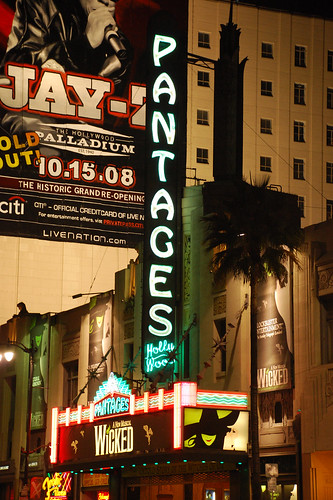
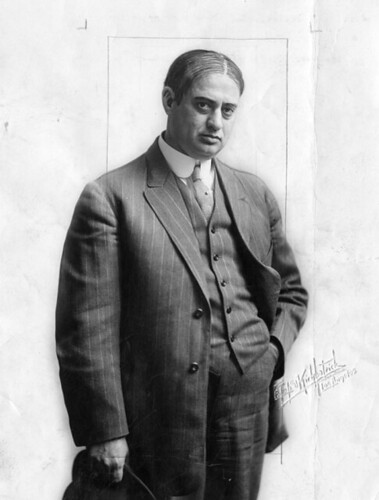
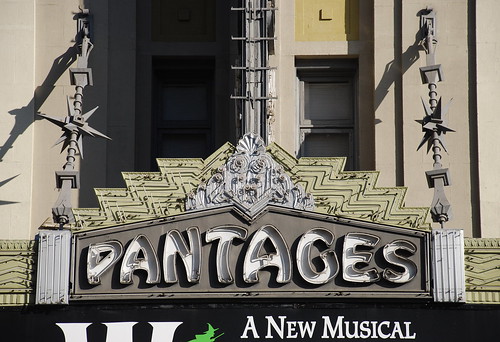
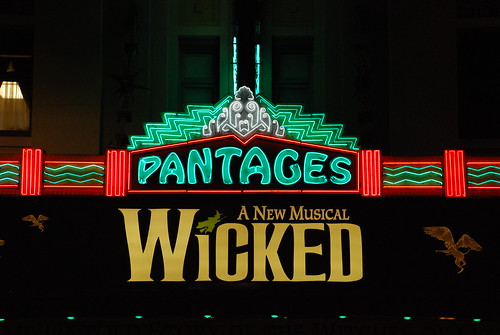
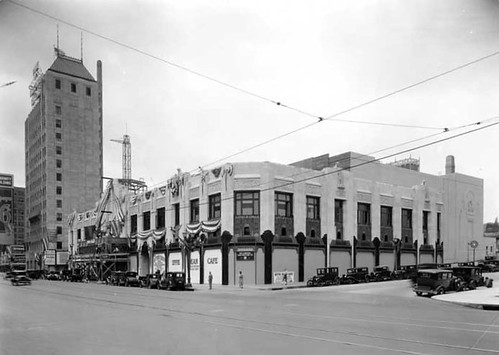
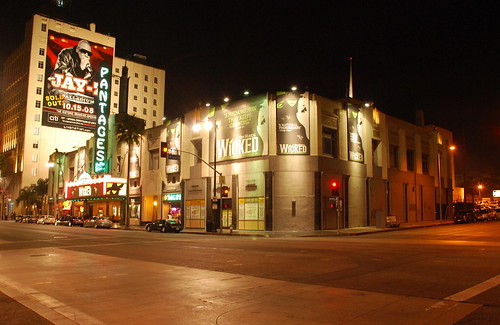
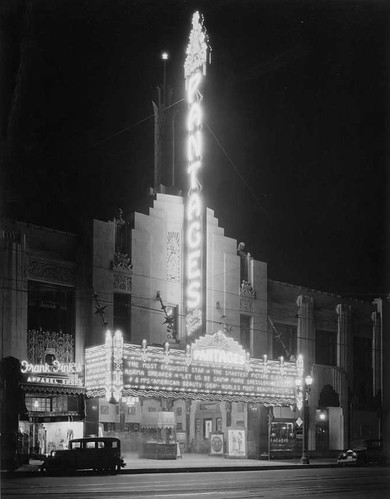
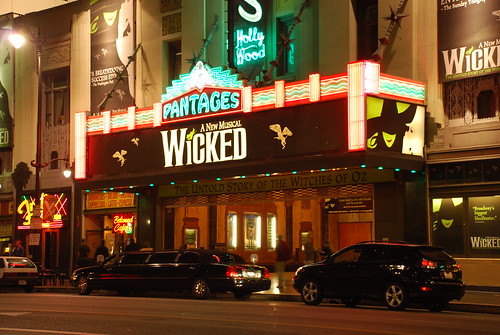
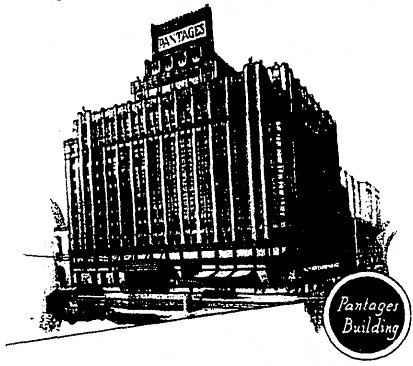

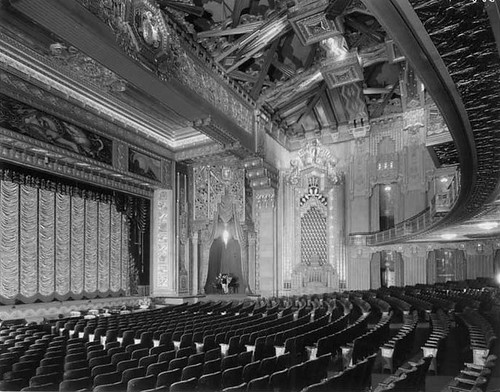
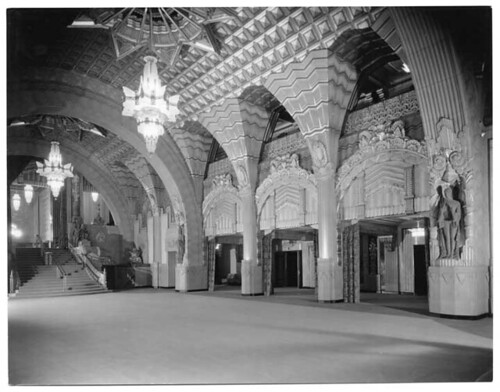
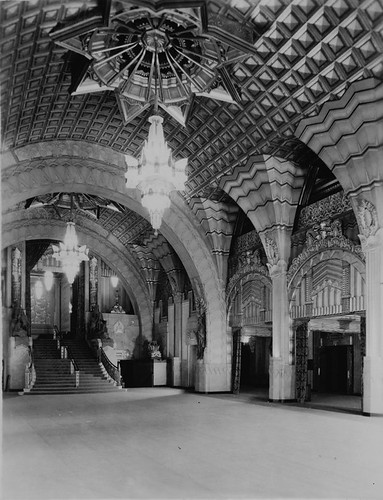
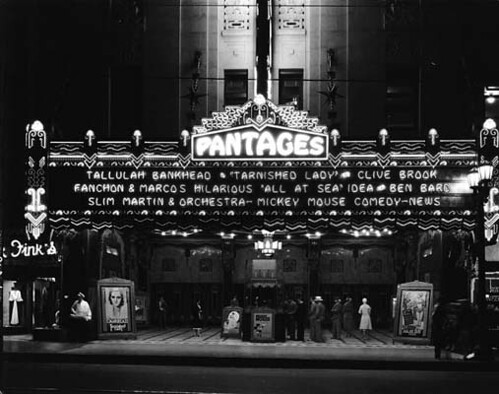
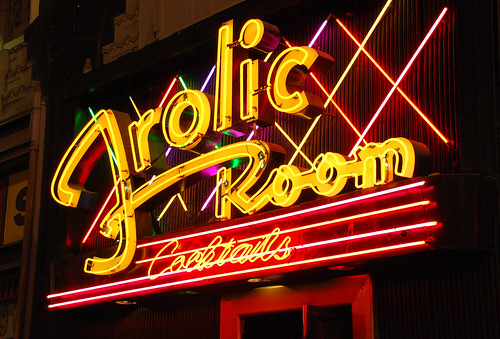
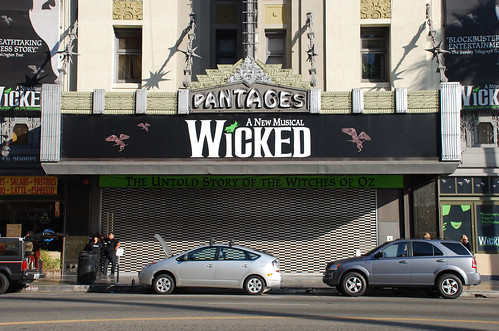
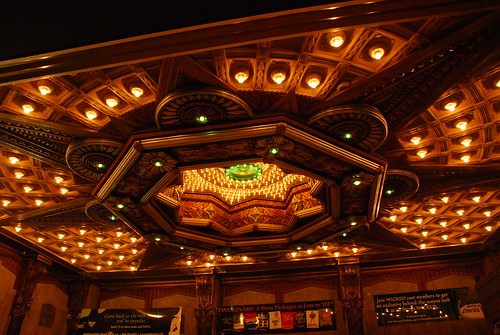

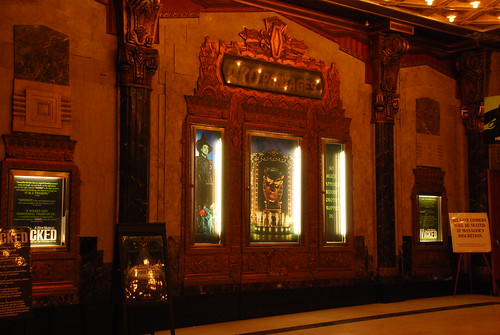
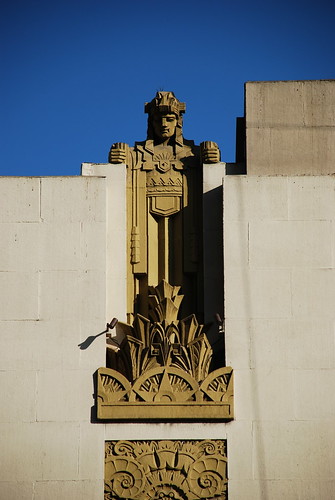
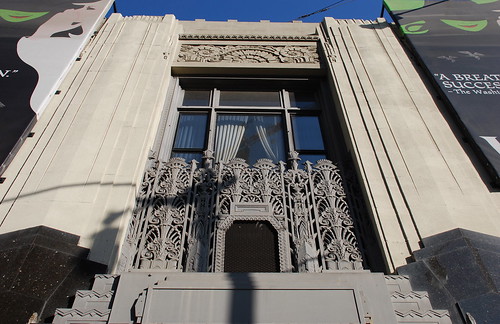


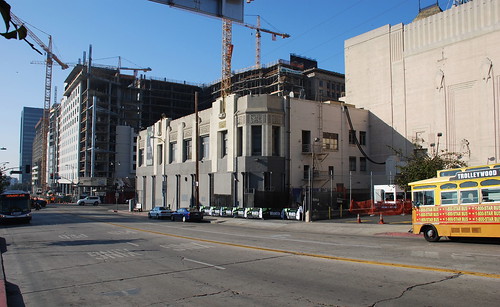
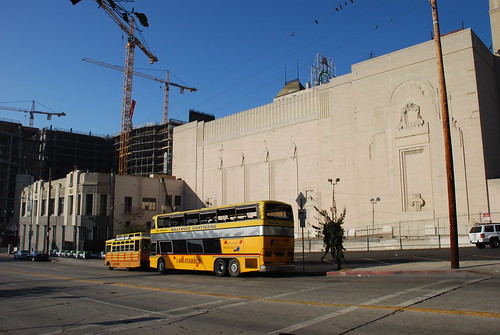
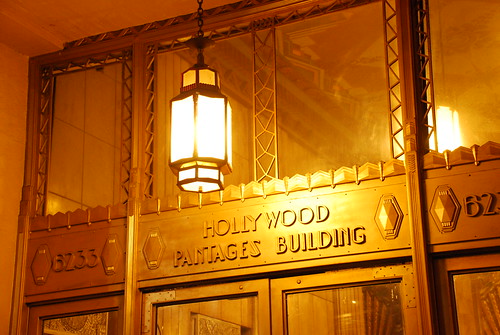
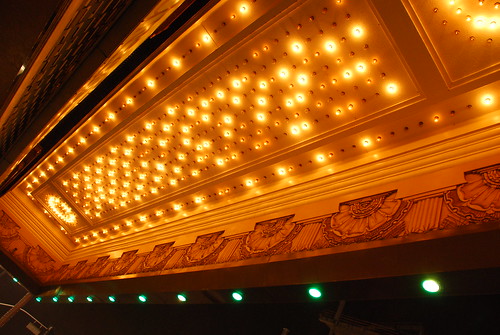
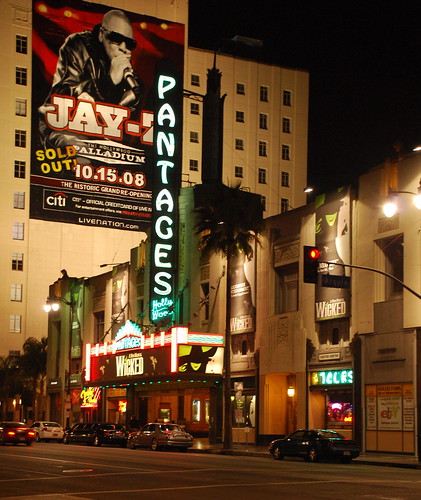
Stunning. The interior even more so.
ReplyDeleteThis building was the first place I worked when I moved to LA. I had to report in to replace a no-show, and when I arrived, late in the morning, I had to pound on doors to be let in. Finally a janitor let me in the front and took me underneath through the basement to where I had to report in on stage.
On that job I also had to run cable through the air plenum under the seats, and climb up the lighting positions at the side of the auditorium.
This building is awesome.
Oh - and must add - there's something so EL AY about the fact that, at the front, there's a bar with a great neon sign, and there's a parking lot with a little taco stand.
ReplyDeleteThanks, g. You're right. The interior's awesome. I always look forward to an event here. I'm glad you got the opportunity to get to know the place so well.
ReplyDeleteIn the early 1960s I went to movies at the Pantages a couple of times. It was a reserved seat road show house then, and tickets were pricey, so when I went to a road show movie I always sat in the balcony, if the theater had one.
ReplyDeleteAt the Pantages, the balcony meant only the mezzanine in those days, as this was the period during which the upper section of the balcony, behind the cross-aisle, had been closed off with a huge curtain, to reduce seating capacity.
Still, these seats offered the best view of that amazing ceiling- or at least that part of it that wasn't obscured by the curtain. Of the half dozen big theaters on Hollywood Boulevard the Pantages was my favorite. I'm glad it's still around.
Thanks, Joe. I'm glad it's around, too. It's good most of the big theaters are still there on Hollywood Boulevard, even if they aren't being used as such. I've seen movies or performances in maybe five or six of them, and I'm with you - the Pantages can't be beat.
ReplyDelete